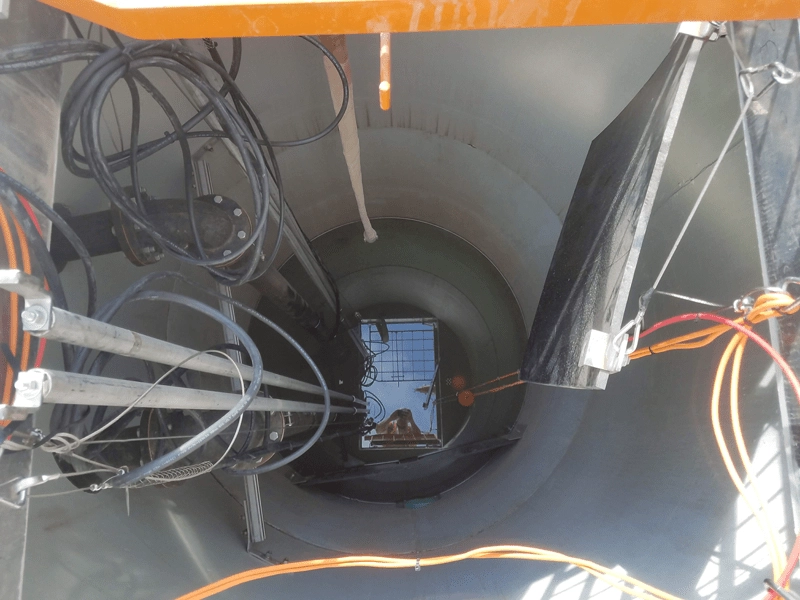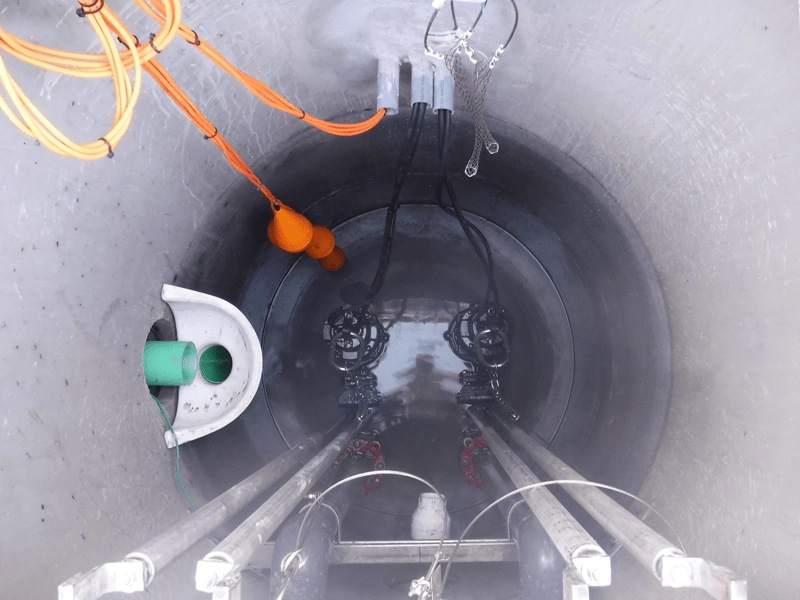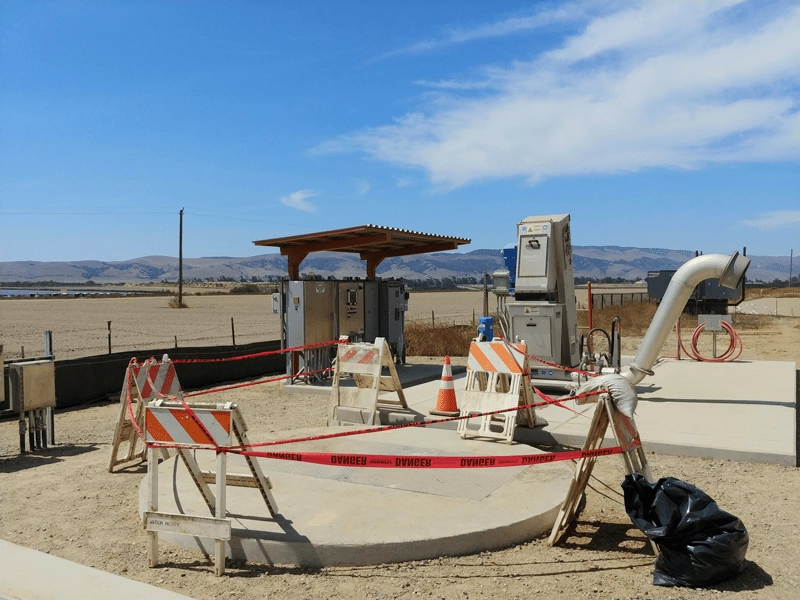
Romtec Utilities designs, engineers, manufactures, and delivers site-specific pump stations as complete packages that arrive ready for installation. Level sensors are components that are included in nearly every pump station, and they are integral to the operation of the pumping system. There are many different level sensor technologies available, each with their own strengths, weaknesses, and ideal water conditions. This will be the first of a multi-part blog series covering each of the level sensor types commonly used in Romtec Utilities pump stations. Today we’ll be evaluating mechanical floats, one of the most widely used level sensors in many pump station applications.

Mechanical float switches have a simple functionality that relies on the buoyancy of a float to detect water levels. These sensors are typically installed in sets of three or four at varying elevations in the wet wall and mounted to a “tree” or “branch” structure. As liquid levels raise or lower inside the well, mechanical float switches are triggered accordingly. This method of level sensing is very reliable and suitable for many different water pumping applications. However, high concentrations of fats, oils, and greases (also known as FOGs) can disrupt float switches if they are allowed to settle and congeal around it. Turbulence in the water can also cause misreading or malfunction with floats if the get caught on other equipment in the well. These issues and others can be remedied with the good pump station design and using complementary components. Here are two real-world pump station projects that utilize mechanical floats as their primary means of liquid level sensing.
Santa Barbara Cottage Hospital – High-Flow Stormwater Pump Station
The expansion of the Santa Barbara Cottage Hospital in California required a new pump station for its stormwater management system. The pump station is capable of handling nearly 1.5 million gallons of stormwater daily against low-head conditions. Mechanical floats were selected for this project for their minimal maintenance requirements and the predictability of the water chemistry being conveyed by the system. Romtec Utilities implemented a typical float configuration with four floats. The lowest float switch indicates when the pumps should shut off while the middle two trigger the primary and secondary pumps. The final and highest float switch will activate a high level alarm to notify personnel that action is needed. The specific elevation levels where these floats are located will vary from project to project depending on the size of the wet well and the active pumping volume.

Northern Branch Jail – High Solid Concentration Wastewater Lift Station
Romtec Utilities designed and supplied a wastewater lift station for the construction of the Northern Branch Jail. The lift station handles medium flows of wastewater against medium head conditions. Compared to other water types, wastewater has a high likelihood for suspended solids, and it produces corrosive and flammable gases if allowed to turn septic. Romtec Utilities selected UL listed Nolta MS1 mechanical floats for this project. These were ideal for this application because they use gold plated contacts that require lower electrical currents versus non UL listed floats to meet the necessary hazardous space requirements. In these classified spaces, low current devices are often required by code.

Mechanical float switches are widely used throughout municipal, industrial, and commercial pumping applications. Different materials are used for the exterior casing and any exposed points of contact, making them suitable for the needs of virtually any project. Even when another form of level detection is used as the primary system, float switches are often installed for redundant sensing. The two projects discussed today highlight the flexibility of mechanical floats in different water conditions and classified space requirements. Visit our blog next week for a similar in-depth analysis of the next level sensor technology, ultrasonic transducers.
